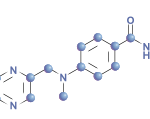Dr. Costenbader discussed the ARTIC REWIND trial, which examined decreased therapeutic dosages in RA patients in remission. The study compared RA patients in remission kept on stable doses of conventional synthetic disease-modifying anti-rheumatic drugs (csDMARDs) with those whose doses were cut in half.5 Patients whose csDMARDs were tapered to half dose experienced a statistically significant increased number of flares during the 12 months of the study.
“Results from this study and others like it have been reflected in the new 2021 ACR guideline for the management of RA, which conditionally recommend continuing the same dose of csDMARD in RA patients in remission,” Dr. Costenbader noted.6
However, she acknowledged that these data could be interpreted differently because 75% of patients were able to tolerate dose reduction. “We can now tell patients interested in tapering that their risk of flare in the upcoming year is about 25% based on the data, but we don’t know exactly their personalized risk,” said Dr. Costenbader. “Shared decision making again remains the name of the game.”
TICOSPA Trial
Dr. Costenbader turned to the TICOSPA trial, which examined the efficacy of a treat-to-target and tight-control approach in managing axial spondyloarthritis (axSpA).7 Such an approach requires rapid assessment of a patient’s response, with treatment intensification until a prespecified target is reached. Such an approach has been demonstrated effective in RA. This was the first trial to directly test this approach in axial spondyloarthritis against usual care.
The trial failed to meet its primary outcome of a 30% improvement in the Axial SpondyloArthritis International Society-Health Index (ASAS-HI; a tool to assess disability and functioning in spondyloarthritis). However, it did meet several secondary outcomes, adding 0.4 quality adjusted life years (QALY). (Note: QALY is a measure of disease burden: One QALY denotes one year of perfect health.)
The treat-to-target and tight-control treatment strategy also reduced overall healthcare spending. Of note, the usual care group was still treated at an expert academic center, and results might have been more striking in a general population.
Stepped Exercise for Knee Osteoarthritis
Dr. Costenbader also highlighted a trial of a stepped-exercise program for patients with knee osteoarthritis.8 U.S. Department of Veterans Affairs (VA) patients were randomized to receive a stepped-exercise program or basic arthritis education.
The intervention group received internet-based exercise instruction for three months. If patients in the intervention group did not adequately improve, they were stepped up to biweekly phone-based exercise coaching sessions and then, ultimately, to in-person physical therapy, if needed.


